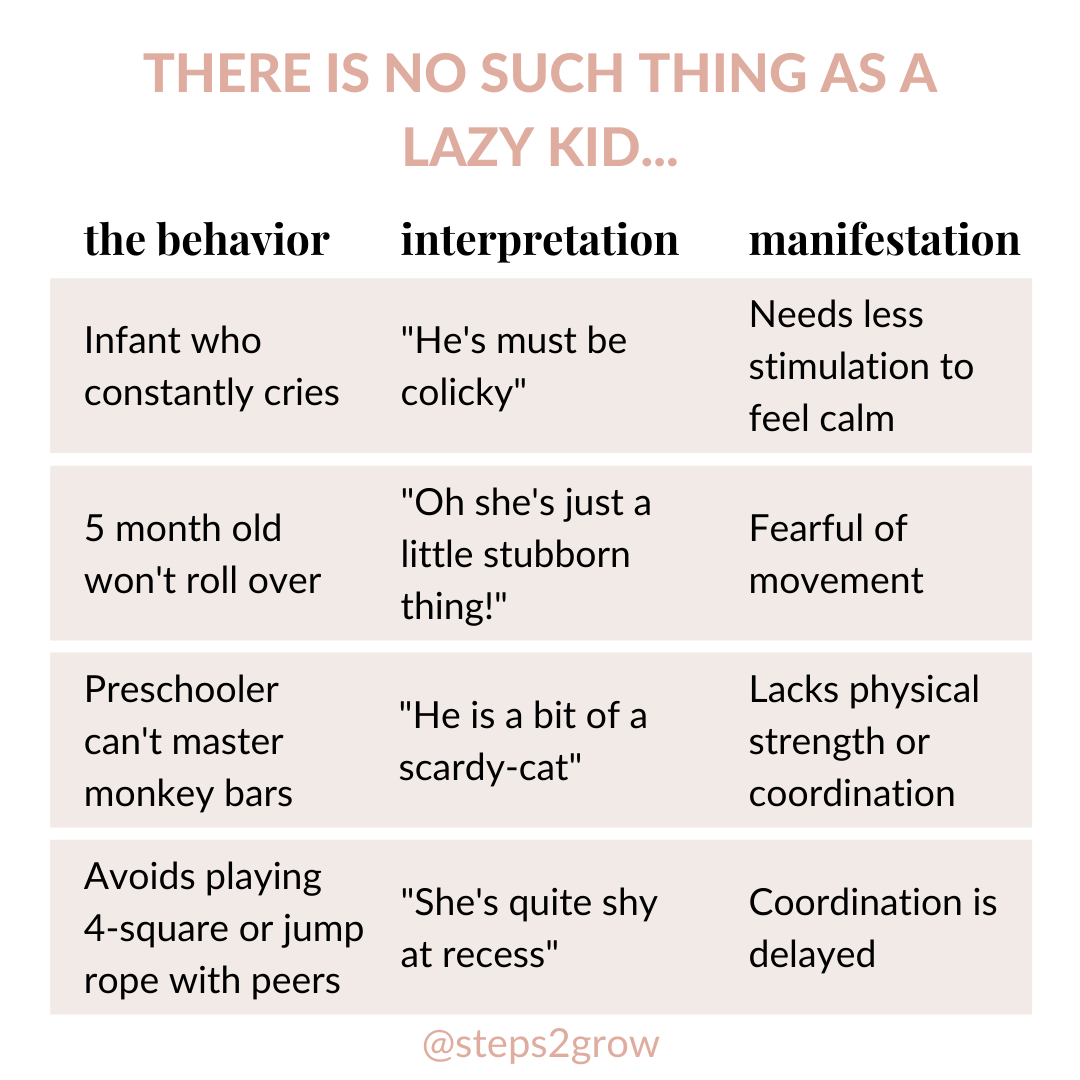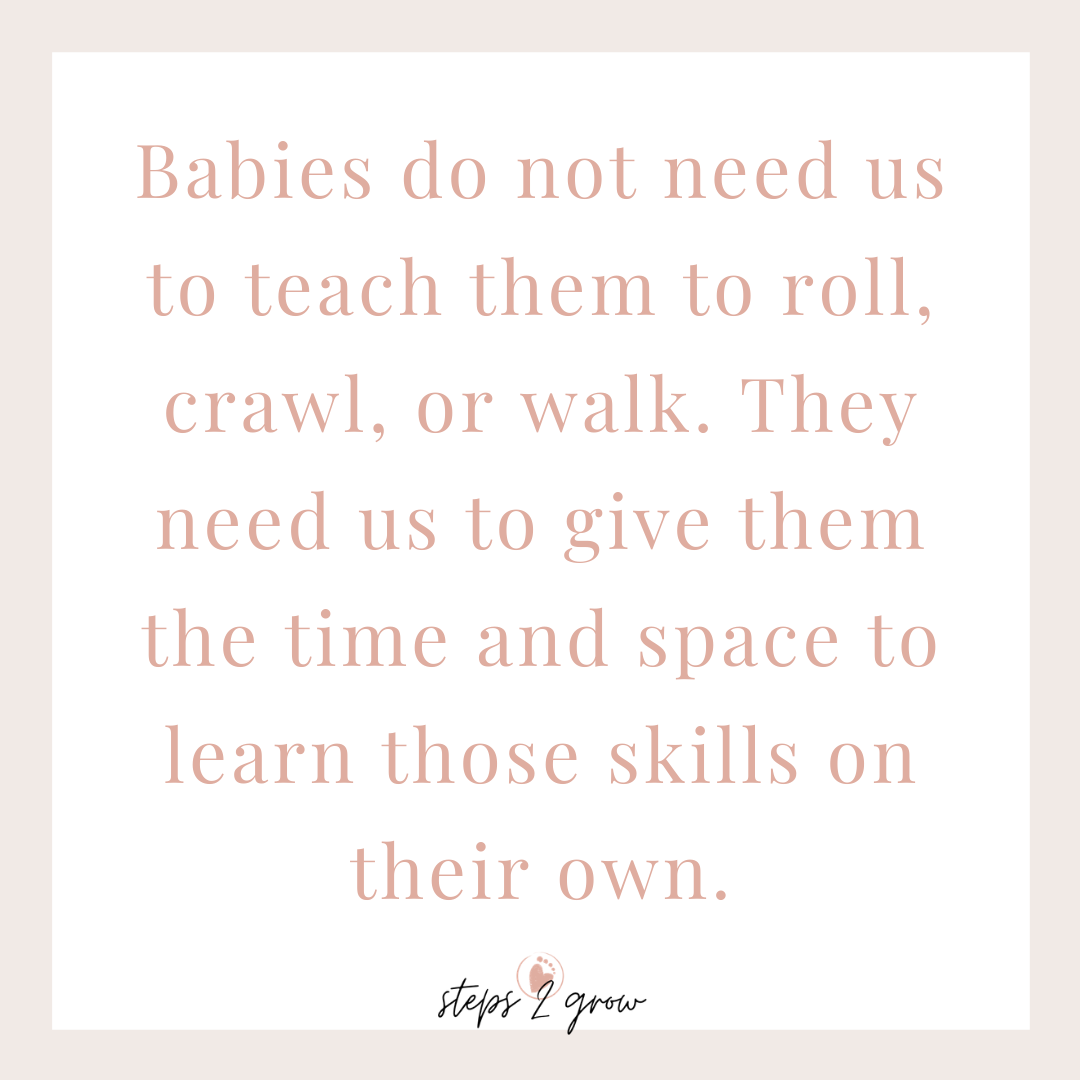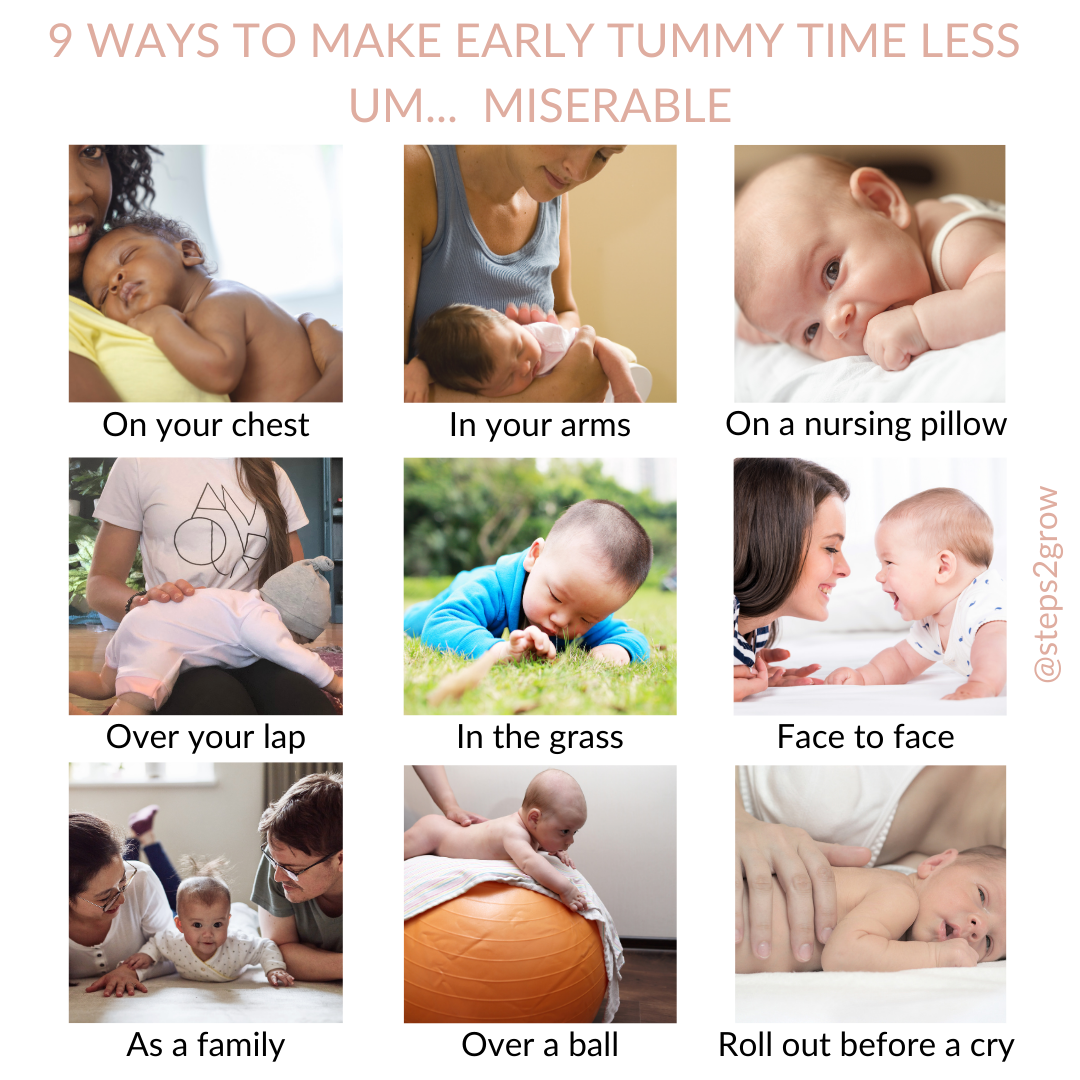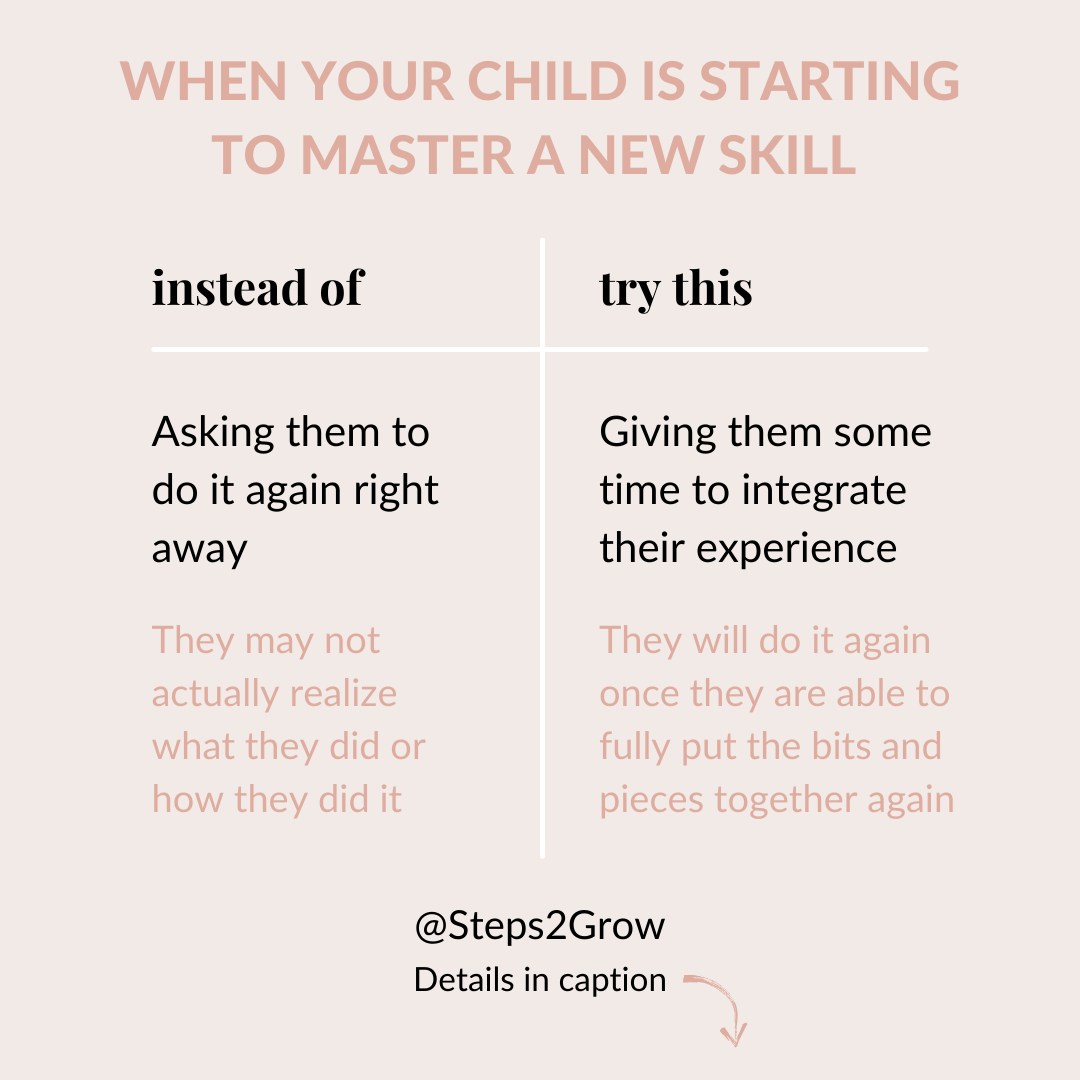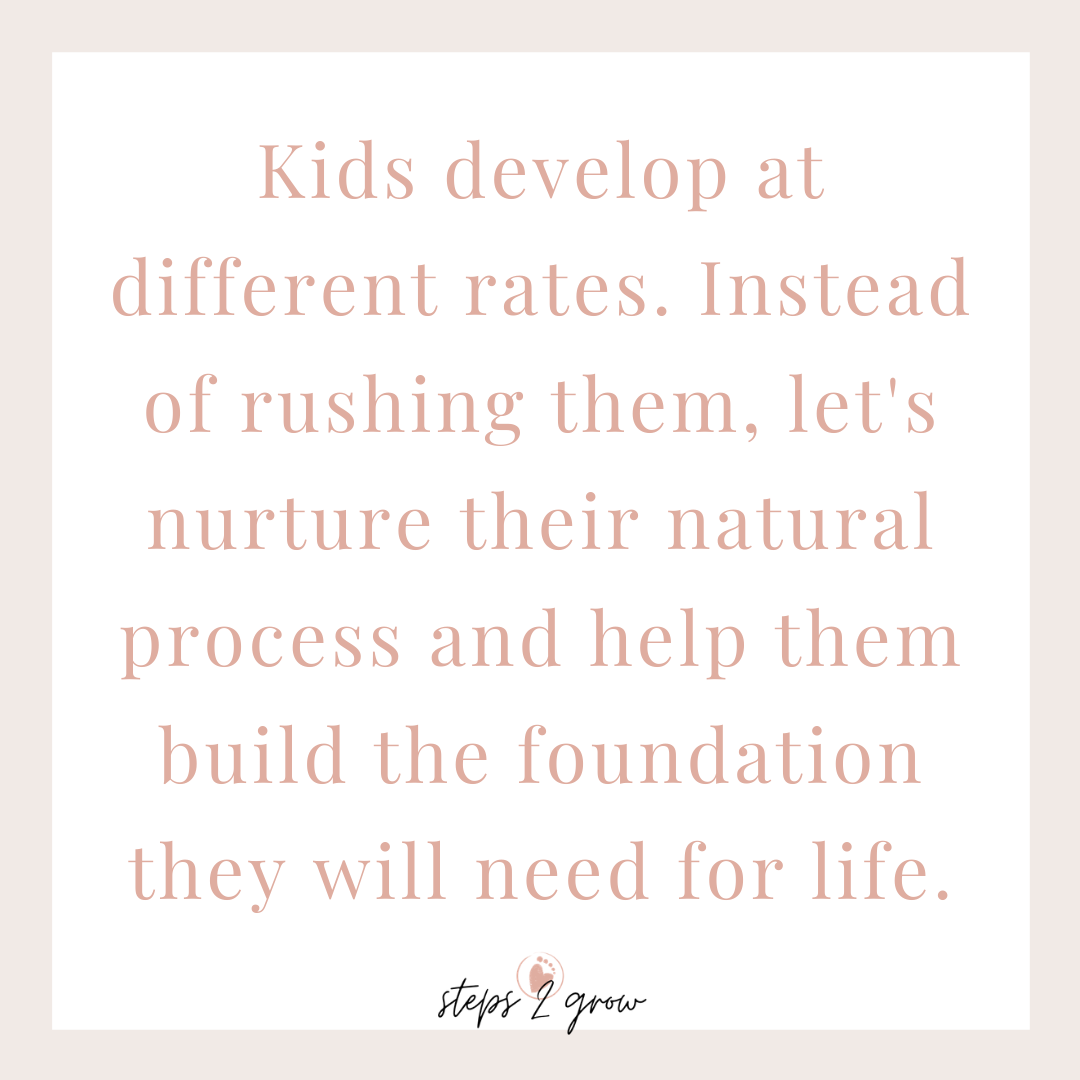First things first... There is a huge age range for when a baby may learn to crawl.That said, it is really hard to slap a guideline age on it! Babies may learn on the early side between 7-9 months, or somewhere between 9 and 11 months old. The age your baby learns to crawl depends on many factors, such as natural activity level, strength, frequency of practice opportunities, motivation, and overall developmental readiness. There are also many steps involved in the process of a baby learning to crawl.So, let's take a look at those mini milestones and developmental steps that pave the way to crawling...starting from when a baby is able to roll to the belly independently...
This is a long learning process! A process we should nurture, not rush or force.And we nurture it by helping your baby lay a strong foundation for crawling skills. It is important to remember, that most babies will learn these skills on their own, without adult "help." Babies do not need us to teach them how to crawl, they figure it out on their own by building each new skill upon the last until they master it. However, I think it is still valuable for you to be aware of how you can play with your baby in a way that will encourage continued development of skills. And there are plenty of ways you can support their learning process while respecting their natural developmental progression. You can help your baby lay a strong foundation by...Prioritize time on the floor. This gives a baby the freedom to explore their own movements, organize them, figure out where their hands and feet are, roll to their side, and master their rolling skills, which are hugely important for crawling later on. Reducing use of baby gear or props, and create a "yes space instead. Gear and props interfere with a baby's natural process, and do not offer any developmental benefits. Instead, you could create a "yes" space, where your baby can do anything they want, nothing is off limits, and everything is okay. This requires some prep. For a young baby, a "yes" space may just be a blanket on the floor or a pack and play. For an older infant, it may be a gated off area or a completely baby proofed room with safe furniture. Encouraging lots of play time on the belly when your baby is happy and comfortable there. This builds head, neck, and shoulder strength, develops the trunk muscles, and prepares the arms and hands for weight bearing. Ample time on the belly is essential for building the foundational skills and strength for crawling. Encouraging play in other positions: on the back, and on the sides. We are 3 dimensional beings, and it is important for a baby to feel all sides of their body. This not only provides great proprioceptive feedback, but it also helps a baby activate different muscle groups while maintaining positioning in those different postures. Providing opportunities for your baby to pivot and scoot around on their belly: As your baby shows readiness, position toys strategically to encourage your little one to reach for, pivot, or scoot toward them. Be sure to stay within their range of ease and structure success, and build from there. Treasure hunts are a perfect activity for this, hiding little toys under nesting cups, or putting toys inside a gym bag or random household container for baby to reach for, or scoot to, and explore. Playing reaching games in sitting once your baby is able to get into sitting on their own. Offer toys from varying angles down low, from the sides, at chest level or higher, encouraging your baby to reach and lean a little bit, developing their balance center and postural stability, both of which are crucial to crawling. Or place toys just out of reach next to them to encourage them to shift weight and reach for it. Playing on a couch cushion on the floor with knees on the floor and arms and toys on the cushion, to elevate the surface of the hands and promote weight bearing through the knees. Playing in front of a mirror. Visual feedback is so valuable as babies learn about their bodies! They may have no idea that they are actually looking at themselves, but mirrors can provide great motivation for a baby to scoot and crawl up to their reflection in order to say hello. Rolling up a blanket and placing it under baby's belly when on hands and knees, while you support at their feet as needed. This will help take over some of the weight, and allow them to feel what it is like to push through their hands and knees and remain upright. This is not meant to teach them how to maintain their balance in this position, but rather to help baby get a feel for what it’s like on hands and knees without the belly on the ground. Here they can experiment with rocking and reaching. Getting outside in nature! Go explore the garden and the grass. New sensory experiences help strengthen the motor system. I hope this is helpful and clears up some questions about crawling. If not, reach out to me on Instagram @steps2grow and we can connect there. Until next time, air hugs! You may also like:
|
AuthorHi! Austen here. Pediatric OT obsessed with leggings and all things child development. Welcome to my journal! I hope to educate and empower parents and caregivers with science inspired insights, effective strategies, and confidence. Categories
All
|


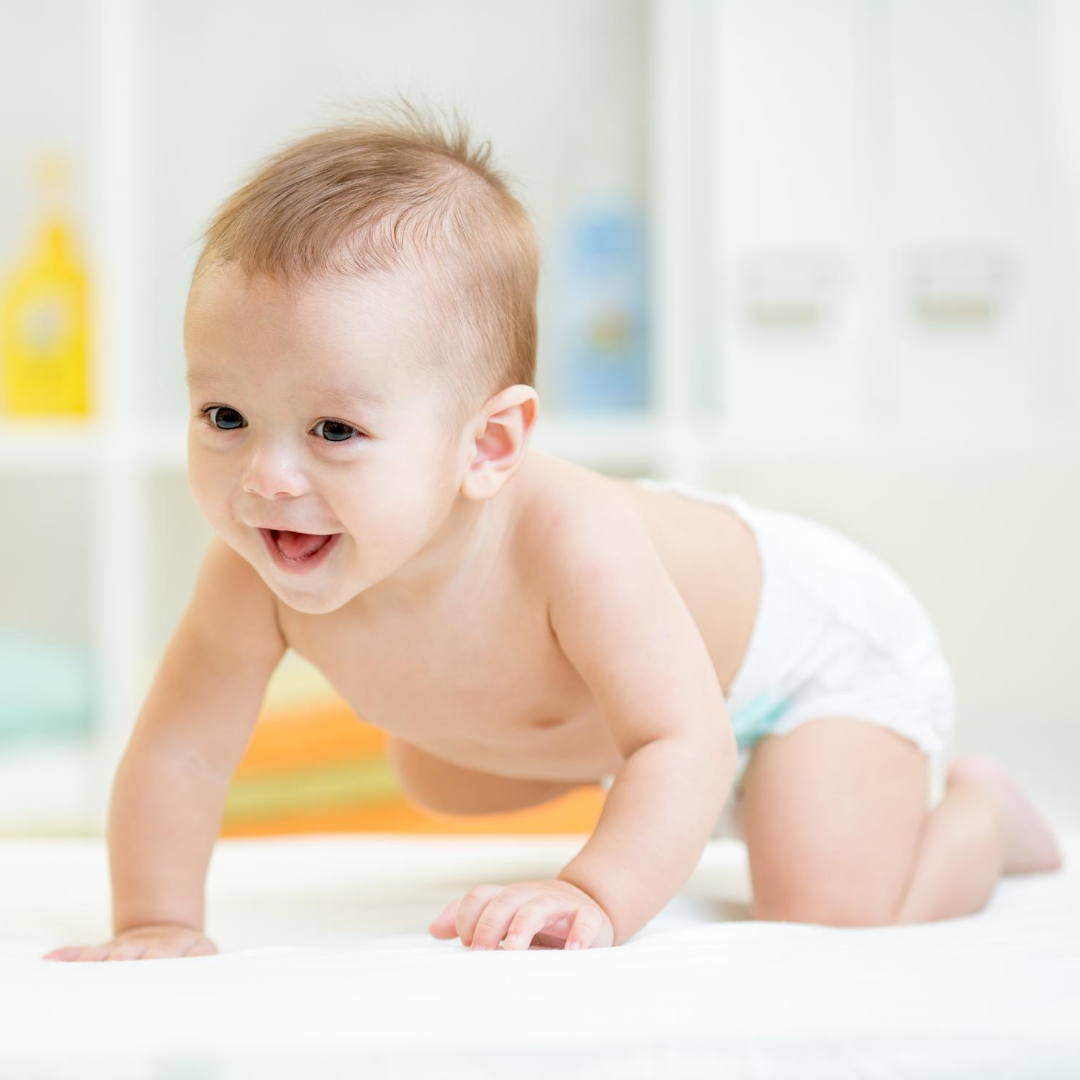
 RSS Feed
RSS Feed


